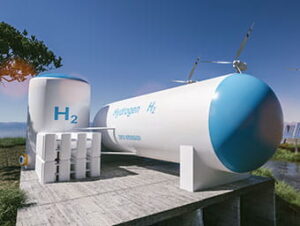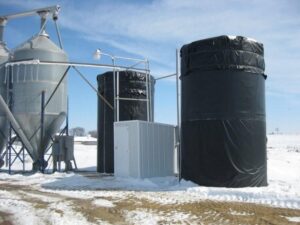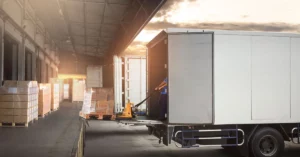The History of Home Heating reflects the evolution of human ingenuity in finding ways to stay warm. From the earliest days, when prehistoric humans relied on open fires in caves to keep warm, to the advanced heating systems of modern homes, the methods of maintaining a comfortable living environment have continually progressed. This journey through time highlights the various technologies and innovations that have transformed how we heat our homes. Today at SVR Trace we are going to review this type of heating cables.
The History of Home Heating can be traced back to ancient times when people first discovered fire and used it for warmth and cooking. Early humans relied on simple open fires to provide heat, often in a central location like a hearth. This method of heating was crucial for survival, especially in colder climates. As civilizations advanced, the Romans developed hypocaust systems, which used a furnace to heat air and circulate it under floors and within walls, providing a rudimentary form of central heating.
During the Middle Ages, the History of Home Heating saw the development of enclosed fireplaces and chimneys, which made it easier to control the flow of smoke and improve air quality indoors. By the 18th and 19th centuries, the Industrial Revolution brought significant changes to home heating with the invention of cast iron stoves and radiators, which were more efficient and allowed for better heat distribution. Check our shop for the best heating cables and order now!
In the 20th century, the History of Home Heating took another leap forward with the introduction of electric and gas-powered heating systems, which offered more control, efficiency, and safety. As technology continued to advance, the late 20th and early 21st centuries saw a shift towards smarter and more sustainable solutions, integrating renewable energy sources and advanced controls into heating systems.
Understanding the History of Home Heating provides insight into the technological advancements that have made homes more comfortable, safe, and energy-efficient. Each phase of the History of Home Heating shows a continuous quest for warmth and efficiency, reflecting broader technological and cultural trends throughout human history. This ongoing evolution highlights how human creativity and innovation have continually transformed the way we manage and experience heat in our homes.
Visit our blog page for the newest content about industrial products and household products in the field of the underfloor heating!
- -How did fire pits and hearths function as the earliest forms of home heating?
- What were the key features of the Roman hypocaust system that made it a pioneering heating technology?
- How did the evolution of the fireplace during medieval Europe improve home heating and indoor air quality?
- What impact did the invention of the chimney during the Renaissance have on the efficiency of home heating?
- In what ways did the cast iron stove represent an advancement over previous heating methods in the 17th and 18th centuries?
- How did the advent of central heating systems in the 19th century transform the way buildings were heated?
- What were the benefits of gas and electric heating systems that emerged in the early 20th century?
- How did forced-air systems enhance heating efficiency and comfort in mid-20th century homes?
- What factors led to the emphasis on energy efficiency in heating technologies during the late 20th century?
- How have smart heating technologies and sustainable solutions reshaped home heating practices in the 21st century?
These are the questions that will be answered in this article. So lets continue!
Table of contents
- Ancient Beginnings: Fire Pits and Hearths
- The Rise of the Roman Hypocaust: Heating with Innovation
- Medieval Europe: The Evolution of the Fireplace
- The Renaissance and the Invention of the Chimney
- 17th to 18th Century: The Cast Iron Stove
- 19th Century: The Advent of Central Heating Systems
- Early 20th Century: The Spread of Gas and Electric Heating
- Mid-20th Century: The Rise of Forced-Air Systems
- Late 20th Century: The Move Toward Energy Efficiency
- 21st Century: Smart Heating and Sustainable Solutions
Ancient Beginnings: Fire Pits and Hearths
The History of Home Heating traces its origins back to ancient times, when early humans relied on fire pits and hearths to provide warmth and cook food. As one of the earliest methods of heating, fire pits were simple depressions dug into the ground, where wood or other combustible materials were burned. This rudimentary approach marked the beginning of the long and evolving History of Home Heating, as it offered a basic solution to surviving cold weather and harsh conditions. You can use the constant wattage heating cable.
The use of fire pits and hearths in the History of Home Heating dates back to prehistoric times, when early humans discovered that fire could be controlled for warmth and protection(self regulating heating cables are good example). These early heating methods were crucial not only for survival but also for social and cultural development. Gathering around a central fire pit, families and communities could share warmth, food, and stories, creating a foundation for social bonds. As such, the History of Home Heating is closely linked to the development of human society.
Over time, the evolution of fire pits into more structured hearths marked an important shift in the History of Home Heating. The hearth, typically made from stone or clay, offered greater stability and control over the fire, making it possible to maintain a consistent source of heat. This development was particularly significant as it allowed early humans to build more permanent shelters. With the introduction of hearths, the History of Home Heating began to see improvements in both efficiency and safety.
The hearth became a central feature in early homes, reflecting its importance in daily life. It was not just a place for warmth but also a focal point for cooking and gathering. This early innovation in the History of Home Heating showed an increasing awareness of the need for efficient and controlled heat sources, paving the way for future advancements. Check out new underfloor heating straps.
The History of Home Heating, therefore, began with these basic fire pits and hearths, laying the groundwork for the technological innovations that would follow. As humans continued to adapt and refine their heating methods, the humble fire pit and hearth remained central to the History of Home Heating, serving as a foundation for centuries of development in creating warm and comfortable living spaces.
The Rise of the Roman Hypocaust: Heating with Innovation
The History of Home Heating reached a remarkable milestone with the rise of the Roman hypocaust system, one of the earliest forms of central heating. Developed in ancient Rome around the 1st century BCE, the hypocaust was a groundbreaking innovation that used an underfloor heating system to warm homes, public baths, and villas. This development marked a significant chapter in the History of Home Heating, demonstrating the Romans’ advanced understanding of engineering and thermal dynamics also efficiency and sustainability.
The hypocaust system worked by creating a network of empty spaces beneath floors and within walls. Hot air and smoke generated by a furnace would flow through these spaces, warming the floors and walls of rooms above. This method of radiant heating was more efficient than traditional fireplaces or open hearths, as it provided a consistent and evenly distributed heat throughout a building. The introduction of the hypocaust system is a defining moment in the History of Home Heating, as it represents one of the first uses of controlled heat to improve indoor comfort something like underfloor heating cables.
The History of Home Heating was profoundly shaped by the hypocaust, which highlighted the Romans’ emphasis on comfort and luxury in daily life. The system was especially popular in the famed Roman baths, where it created warm, pleasant environments for relaxation and socialization. Wealthy Romans also installed hypocausts in their private residences, underscoring their desire for comfort and status. This innovation not only elevated the standards of living but also set a new benchmark in the History of Home Heating.
The hypocaust system spread throughout the Roman Empire, influencing the History of Home Heating across Europe, North Africa, and parts of Asia. While its use declined after the fall of Rome, the concept of central heating continued to inspire later heating technologies. The hypocaust laid the groundwork for future developments in heating systems, securing its place in the History of Home Heating as a precursor to modern underfloor heating.
In conclusion, the rise of the Roman hypocaust was a transformative moment in the History of Home Heating. It showcased the ingenuity and cost efficiency and engineering prowess of the Romans and established new standards for indoor comfort. Even today, the influence of the hypocaust system can be seen in contemporary heating solutions, reaffirming its significant role in the History of Home Heating.
Medieval Europe: The Evolution of the Fireplace
The History of Home Heating underwent notable changes during the Medieval period in Europe, particularly with the evolution of the fireplace. Before the widespread adoption of fireplaces, most homes relied on central open hearths for heating, which were inefficient and filled living spaces with smoke. The development of the fireplace, combined with the use of chimneys, marked a significant advancement in the History of Home Heating, allowing for better indoor air quality and more efficient use of fuel. Like radiant floor heating.
During the early Medieval period, the fireplace began to evolve from a simple open hearth into a more sophisticated heating method. Fireplaces were moved from the center of the room to an exterior wall, which allowed the smoke to be channeled out through a chimney. This development was revolutionary in the History of Home Heating, as it dramatically improved the comfort and safety of indoor environments. The introduction of the chimney helped to ventilate smoke and soot, making homes warmer, cleaner, and more livable.
The evolution of the fireplace also brought new architectural possibilities to the History of Home Heating. Stone or brick hearths were constructed, often with intricate designs and mantels that reflected the social status and wealth of the homeowner(Hydronic underfloor heating the same today!). Fireplaces became a focal point in rooms, not only providing heat but also serving as a symbol of hospitality and family life. This period marked a turning point in the History of Home Heating, as the fireplace became an essential feature of European homes.
The improvements in fireplace design also had economic and social implications for the History of Home Heating. The ability to effectively heat individual rooms made homes more comfortable during long, harsh winters, and reduced the amount of wood or peat needed for fuel. This efficiency allowed more families to afford heating, influencing domestic life and social structures in medieval Europe. Check out the parallel silicone heating cable.
Overall, the evolution of the fireplace in Medieval Europe played a crucial role in the History of Home Heating. By enhancing heating efficiency and improving living conditions, it laid the foundation for future advancements in heating technology. The fireplace’s development remains a significant milestone in the ongoing History of Home Heating, shaping how people experienced warmth and comfort in their homes.
The Renaissance and the Invention of the Chimney in history of home heating
The History of Home Heating took a monumental turn during the Renaissance with the invention and widespread adoption of the chimney. Before this period, heating in homes primarily relied on open hearths located in the center of large rooms. These hearths provided warmth but filled homes with smoke and soot, making indoor air quality poor and ventilation a constant challenge. The introduction of the chimney dramatically changed the History of Home Heating by improving both comfort and safety. Like thermostats and their role in home heating.
The invention of the chimney is believed to have occurred in Europe during the 12th century, but it wasn’t until the Renaissance that it became a standard feature in homes. The chimney revolutionized the History of Home Heating by allowing smoke to be directed out of the home, which made it possible to place fireplaces along the walls of buildings rather than in the center of rooms. This change not only improved the efficiency of heating but also allowed for more sophisticated architectural designs, transforming both the functionality and aesthetics of homes. Thus, the History of Home Heating became intertwined with the development of new architectural styles.
The Renaissance saw the chimney become a symbol of innovation in the History of Home Heating . By providing a way to efficiently vent smoke, chimneys allowed for the creation of multiple fireplaces in a single home, each capable of heating individual rooms, helping home heating industry and the environment. This development enabled greater control over indoor temperatures and offered a more personalized approach to heating, which was a significant advancement in the History of Home Heating .
The adoption of chimneys also influenced social and cultural practices during the Renaissance. Homes became cleaner, more comfortable, and better suited for hosting social gatherings. This shift played an important role in the History of Home Heating , as it reflected the growing desire for improved living conditions and the advancement of domestic technologies.
In conclusion, the invention of the chimney marked a critical turning point in the History of Home Heating . By allowing for more effective and efficient heating methods, it paved the way for further innovations and improvements in residential comfort. The chimney’s impact on the History of Home Heating is still evident today, as it remains a fundamental element in home design and heating systems.
17th to 18th Century: The Cast Iron Stove
The 17th and 18th centuries were pivotal in the History of Home Heating, marked by the revolutionary introduction of the cast iron stove. This period witnessed a significant advancement in home heating systems, as cast iron stoves transformed the way homes were heated. Prior to this innovation, the History of Home Heating was characterized by the use of open fireplaces and less efficient metal stoves that often struggled to provide adequate warmth.
The cast iron stove represented a major shift in the History of Home Heating due to its superior heat retention and distribution capabilities. Made from cast iron, these stoves were designed to maximize fuel efficiency, producing more heat with less wood or coal like heat tracing cables today. This was a substantial improvement over earlier methods, which often led to uneven heating and wasted energy. The History of Home Heating saw a new era of more effective and controllable warmth, thanks to the durability and efficiency of cast iron.
In addition to improving heating efficiency, cast iron stoves also influenced home design. The History of Home Heating during this era included the integration of these stoves into home layouts, allowing for more effective heat management and distribution throughout multiple rooms. This change reflected a growing understanding of how to optimize heating within the home environment. Check out underfloor heating films.
Furthermore, the widespread adoption of cast iron stoves in the 17th and 18th centuries marked a crucial chapter in the History of Home Heating. These stoves became a central feature in many households, offering a new level of comfort and control over indoor temperatures. As a result, they played a key role in shaping the evolution of heating practices.
Overall, the cast iron stove era represents a significant milestone in the History of Home Heating, illustrating how technological advancements have continually improved indoor comfort and efficiency. The impact of these stoves extended far beyond their time, influencing future developments in heating technology and the way homes are warmed.
19th Century: The Advent of Central Heating Systems
The 19th century marked a pivotal era in the History of Home Heating with the advent of central heating systems. This period witnessed a significant shift from traditional methods of heating, such as open fires and stoves, to more sophisticated and efficient technologies. The development of central heating systems fundamentally altered the landscape of home heating, reflecting a growing demand for improved comfort and convenience.
Central heating systems emerged as a revolutionary advancement in the History of Home Heating. Prior to their introduction, heating was largely localized, with individual stoves or fireplaces serving specific rooms. The innovation of central heating allowed for the distribution of heat throughout an entire building from a single source, fundamentally changing how homes were heated. These systems typically utilized a furnace to heat water or air, which was then circulated through pipes or ducts to different rooms. This method provided a more uniform and controllable heating experience compared to earlier techniques. The same story goes on in oil and gas industry and underfloor heating.
The spread of central heating systems in the 19th century also marked a shift in architectural design. Buildings began to incorporate features that supported centralized heating, such as ductwork and radiator placements. This evolution in the History of Home Heating enabled architects and builders to design more spacious and functional interiors, no longer constrained by the need for multiple stoves or fireplaces. Check out drain-line heating cable!
Central heating systems represented a significant milestone in the History of Home Heating, reflecting broader technological advancements and an increasing focus on indoor comfort. By providing more consistent and efficient heating, these systems set new standards for residential warmth and convenience. The success and widespread adoption of central heating during the 19th century laid the groundwork for future innovations in the History of Home Heating, influencing the development of modern heating technologies.
In essence, the 19th century was a transformative period in the History of Home Heating, marking a shift towards more advanced and efficient heating solutions that continue to impact how we manage indoor climates today.
Early 20th Century: The Spread of Gas and Electric Heating
In the early 20th century, the History of Home Heating experienced a remarkable transformation with the widespread adoption of gas and electric heating systems. This era marked a significant departure from traditional heating methods, which primarily relied on coal or wood-burning stoves and open hearths. The advent of gas and electric heating represented a new chapter in the History of Home Heating, characterized by increased convenience, efficiency, and control.
Gas heating systems began to gain popularity in the early 1900s, offering a cleaner and more efficient alternative to solid fuel. Gas heaters were introduced to homes with the promise of consistent warmth and less maintenance compared to their predecessors. This shift significantly altered the History of Home Heating, making it possible for households to enjoy a reliable heat source with minimal effort. Gas heaters could be easily controlled, allowing for better management of indoor temperatures and contributing to improved comfort and energy efficiency. Also helping health benefits of underfloor heating.
Similarly, electric heating systems emerged as a groundbreaking innovation in the History of Home Heating. The use of electricity for heating offered several advantages, including precise temperature control and cleaner operation helping household underfloor heating. Electric heaters, such as radiant heaters and baseboard units, became popular for their ease of installation and operation. This new technology allowed for zoned heating, where different rooms could be heated independently, further advancing the History of Home Heating by enhancing user control and comfort.
The spread of gas and electric heating in the early 20th century marked a pivotal moment in the History of Home Heating. These technologies not only improved the efficiency and convenience of home heating but also paved the way for future innovations. As homes transitioned from coal and wood to gas and electric systems, the History of Home Heating began to reflect a shift towards more modern, clean, and efficient heating solutions. Check out heating cable with inactive copper.
Overall, the early 20th century was a transformative period in the History of Home Heating, setting the stage for continued advancements in heating technology and shaping the way we manage indoor climate today.
Mid-20th Century: The Rise of Forced-Air Systems
The History of Home Heating experienced a significant shift in the mid-20th century with the rise of forced-air systems. Prior to this period, heating methods were relatively limited, with fireplaces, stoves, and radiators being the primary sources of warmth. However, technological advancements and a growing demand for more efficient heating solutions led to the development of forced-air systems, transforming the History of Home Heating. Also benefits of underfloor heating systems.
Forced-air systems became popular during the post-World War II era, a time marked by rapid suburban expansion and the construction of new homes in History of Home Heating. These systems relied on furnaces to heat air, which was then distributed throughout the home via ductwork and vents. Unlike older methods that relied on radiant heat or convection, forced-air systems could quickly and effectively warm entire homes, offering a more consistent and comfortable living environment. This innovation marked a turning point in the History of Home Heating.
The popularity of forced-air systems was driven by their versatility and efficiency. These systems could use a variety of energy sources, including natural gas, oil, and electricity, making them adaptable to different regions and fuel availabilities. Moreover, they could easily be integrated with air conditioning systems, providing both heating and cooling solutions in one system and helping ease and comfort of underfloor heating systems.. As a result, forced-air systems soon became the dominant method in the History of Home Heating.
During this period, the increased availability of affordable energy sources further spurred the adoption of forced-air systems. As natural gas and electricity became more accessible, homeowners (Installation Process of underfloor heating systems) were able to transition away from coal and wood, favoring these cleaner and more efficient options. This shift played a critical role in shaping the modern History of Home Heating, as forced-air systems came to represent a standard feature in mid-20th-century homes.
In summary, the rise of forced-air systems in the mid-20th century was a transformative moment in the History of Home Heating. Their efficiency, adaptability, and convenience set a new standard for residential comfort, influencing how homes were heated for decades to come. The adoption of these systems marked a significant chapter in the evolving History of Home Heating.
Late 20th Century: The Move Toward Energy Efficiency
The History of Home Heating in the late 20th century was marked by a significant shift towards energy efficiency. As awareness of environmental issues and energy costs grew, there was a concerted effort to improve the efficiency of heating systems. This era witnessed innovations aimed at reducing energy consumption while maintaining or enhancing indoor comfort. The History of Home Heating during this time reflects a growing commitment to sustainability and cost-effectiveness in home heating technologies. New blog: Hydrogen process and heat-tracing.
During the late 20th century, advancements in heating technology focused on improving the efficiency of systems and reducing their environmental impact. High-efficiency furnaces, often with improved heat exchangers and better insulation, became more common in History of Home Heating. These innovations allowed for more effective use of fuel, leading to lower energy consumption and reduced heating costs. The History of Home Heating during this period is characterized by the widespread adoption of these high-efficiency systems, driven by new regulations and incentives for energy conservation.
Another notable development in the History of Home Heating was the increased use of programmable thermostats. These devices allowed homeowners to better control their heating systems by setting schedules that aligned with their daily routines, further enhancing energy efficiency. The late 20th century also saw the introduction of energy-efficient windows, better insulation materials, and advanced heating controls, all contributing to a more comprehensive approach to reducing energy use (Silo heating and heating cable).
The move toward energy efficiency in the History of Home Heating was influenced by both technological advancements and growing environmental concerns. The adoption of renewable energy sources, such as solar and geothermal heating, began to gain traction, reflecting a broader shift towards sustainable practices. This period set the stage for the continued evolution of heating technologies in the 21st century, emphasizing the importance of efficiency and environmental responsibility in home heating systems.
21st Century: Smart Heating and Sustainable Solutions
The History of Home Heating in the 21st century has been profoundly shaped by the rise of smart heating technologies and sustainable solutions. As concerns about energy consumption and environmental impact have intensified, there has been a marked shift towards integrating advanced technologies that offer greater efficiency and environmental responsibility. The History of Home Heating today reflects a dynamic interplay between innovation and sustainability. (Loading and unloading process and home heating is our blog)
Smart heating systems have become a defining feature of the 21st-century History of Home Heating. These systems utilize sophisticated technology to optimize heating performance, providing enhanced control and convenience for homeowners and writing part of History of Home Heating. Smart thermostats, for example, use sensors and algorithms to learn user preferences and adjust temperatures accordingly, minimizing energy waste. The History of Home Heating during this period highlights the role of these smart devices in achieving greater energy efficiency and reducing heating costs.
Sustainability has also become a central theme in the History of Home Heating of the 21st century. The integration of renewable energy sources, such as solar thermal systems and geothermal heat pumps, has gained prominence in History of Home Heating. These systems not only reduce reliance on fossil fuels but also lower greenhouse gas emissions, aligning with broader environmental goals. The History of Home Heating is marked by a growing emphasis on reducing carbon footprints and adopting technologies that support a greener future.
Furthermore, advancements in building design and materials contribute to the evolution of the History of Home Heating. Enhanced insulation, energy-efficient windows, and smart building technologies work together to improve overall thermal performance, making homes more energy-efficient.
The 21st century’s focus on smart heating and sustainable solutions represents a significant chapter in the History of Home Heating. These innovations reflect a shift towards greater efficiency, environmental stewardship, and technological integration, setting the stage for the future of heating systems and continuing to evolve in response to global challenges and technological advancements.
Conclusion
The History of Home Heating is a fascinating journey through human ingenuity and adaptation. From the primitive fire pits of ancient times to the sophisticated smart heating systems of today, each era has contributed to the evolution of how we keep our homes warm and comfortable. This progression reflects broader technological advancements, societal changes, and growing environmental awareness.
In ancient civilizations, the History of Home Heating began with basic methods like open fires and rudimentary hearths, which were essential for survival but far from efficient. The Romans’ development of the hypocaust system marked a significant leap forward, demonstrating an early understanding of central heating. This innovation laid the groundwork for future advancements and showcased the potential for engineered solutions in home comfort. Open space heating and heating cables are included too.
As we moved into the medieval period, the History of Home Heating saw the introduction of enclosed fireplaces and chimneys. These developments improved the effectiveness of heating by directing smoke outside and allowing for better heat management. The Renaissance further enhanced this with the invention of the chimney, which revolutionized indoor heating and marked a significant milestone in the History of Home Heating.
The 17th and 18th centuries introduced the cast iron stove, which provided a more efficient and durable method of heating compared to traditional fireplaces. This advancement illustrated a shift towards more practical and controlled heating solutions. The History of Home Heating continued to evolve in the 19th century with the advent of central heating systems, which allowed for consistent and widespread warmth throughout buildings, transforming residential and commercial heating.
The early 20th century brought gas and electric heating into the mainstream, marking another pivotal moment in the History of Home Heating. These technologies offered cleaner and more convenient alternatives to previous methods, reflecting an increasing focus on efficiency and ease of use. The mid-20th century’s rise of forced-air systems further enhanced heating capabilities, integrating both heating and cooling into comprehensive climate control solutions.
The late 20th and early 21st centuries represent a new chapter in the History of Home Heating, emphasizing energy efficiency and sustainability. Innovations such as smart thermostats and renewable energy systems have become central to modern heating strategies, addressing both environmental concerns and consumer demands for greater control and efficiency in History of Home Heating. The ongoing evolution in the History of Home Heating underscores the continuous quest for better, more sustainable ways to maintain comfort in our homes.
In conclusion, the History of Home Heating illustrates a remarkable journey from primitive beginnings to advanced technological solutions. Each phase reflects the evolving needs and innovations of its time, shaping how we heat our homes and influencing future developments in this essential aspect of History of Home Heating.






